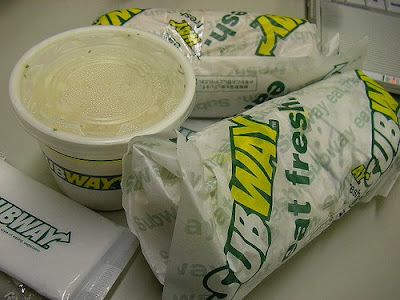The Hidden Costs of Moving into a Fixer Upper
 I bought a fixer upper. I actually wanted to buy a fixer upper. I thought it would be fun. And though it is a whole lot of work that has so far taken at least 9 different people (me, significant other, significant other's parents, contractor, stuctural engineer, drywall guy, two electricians) to accomplish (and we're not done yet), it is fun. I love that I now know how to do various home improvements that I didn't know a thing about before, and I love that I've had an excuse to use a power sander for the first time since the wood sculpture classes I took in college. I love that I know what the wiring inside my walls looks like. I love that I got to use a crowbar and a sledgehammer. I love how incredibly sore and exhausted I feel after working on my house and how wonderful it makes my bed feel.
I bought a fixer upper. I actually wanted to buy a fixer upper. I thought it would be fun. And though it is a whole lot of work that has so far taken at least 9 different people (me, significant other, significant other's parents, contractor, stuctural engineer, drywall guy, two electricians) to accomplish (and we're not done yet), it is fun. I love that I now know how to do various home improvements that I didn't know a thing about before, and I love that I've had an excuse to use a power sander for the first time since the wood sculpture classes I took in college. I love that I know what the wiring inside my walls looks like. I love that I got to use a crowbar and a sledgehammer. I love how incredibly sore and exhausted I feel after working on my house and how wonderful it makes my bed feel.Buying a fixer upper is supposed to be a way to save money. You buy a house for below market value since it needs so much work that most people aren't willing to do. But buying a fixer upper also has some hidden costs that I've discovered during the process.
1. Paying rent and a mortgage at the same time. This is probably the biggest hidden cost. You can't live in a true fixer upper while it is being fixed unless you are willing to move twice--first to put all your stuff in storage so it doesn't get ruined (or stolen) during the renovations, and second to move into the house.
If you have pets like we do, you can forget about this plan, because while you may be able to live in a construction zone, trying to keep track of two kitties with strangers coming in and out of the house all the time and leaving doors and windows open is just not an option, nor is putting them in a kitty hotel for 4-6 weeks (which probably costs more than my rent, not to mention how much the cats would hate it).
2. Eating out. My house is about 30 miles from my apartment, so I can't just run home for a quick meal. For a while, I was eating Subway for lunch and Jack in the Box for dinner every day, which was costing me at least $10 a day, not to mention making my pants feel tighter. With no fridge, microwave, or toaster oven at the house and dust flying everywhere besides, preparing food there wasn't possible.
Fortunately, I developed a new system. I pack a cooler at my apartment every morning and take sodas, sandwiches, and other goodies to the house with me so I can pay grocery store prices instead of restaurant prices for my food. That being said, Subway's $5 footlongs are quite the deal if you can stretch it into two meals. Good luck making a footlong sub last two meals when you're working on a house, though! All that manual labor makes a girl hungry. I've taken to carrying around a package of coldcuts and cheese and a loaf of bread so I can eat as often as I want.
3. Work. I am self-employed, and this house stuff is seriously eating into the time and energy I normally spend making money. I'm hoping I don't have a low-income January because of this, but I think I can pull it off. It's been hard shifting my focus to anything besides house stuff, though. And while I frequently work late at night, it's one thing to write articles late at night when you've been watching TV all day, and quite another to write articles late at night when you've been painting and running back and forth between your house and Home Depot all day.
Photo by jetalone
Related posts:
Consider Buying a Fixer-Upper
Home Improvement Rewards Credit Cards
Making Home Ownership Affordable
Investopedia Followup: Ten Ways To Tell If You're Getting A Fair Price On A Home
First-Time Homebuyer Guide


Comments